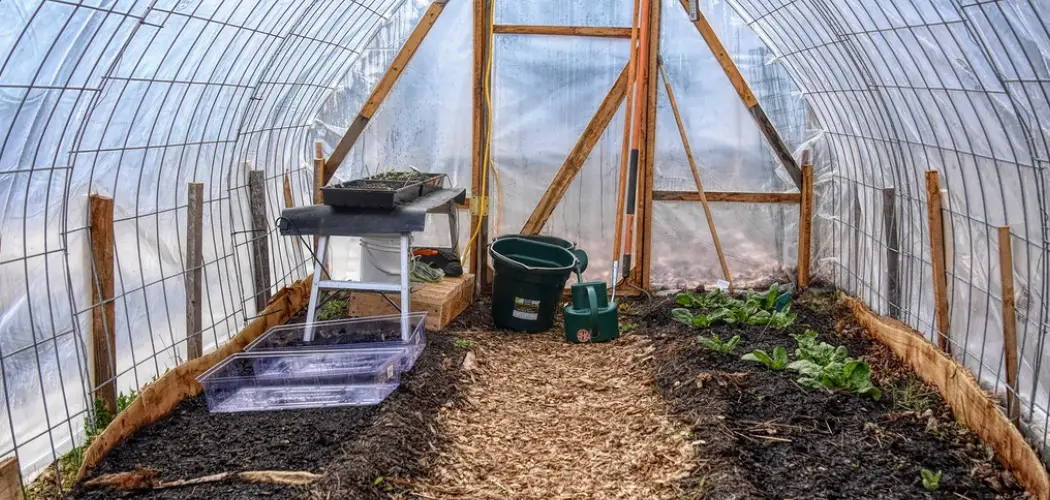A hoop coop is a simple and affordable structure that can be used to house chickens, ducks, or other small animals. It consists of a series of hoops made from PVC pipes or metal conduits, covered with chicken wire or hardware cloth.
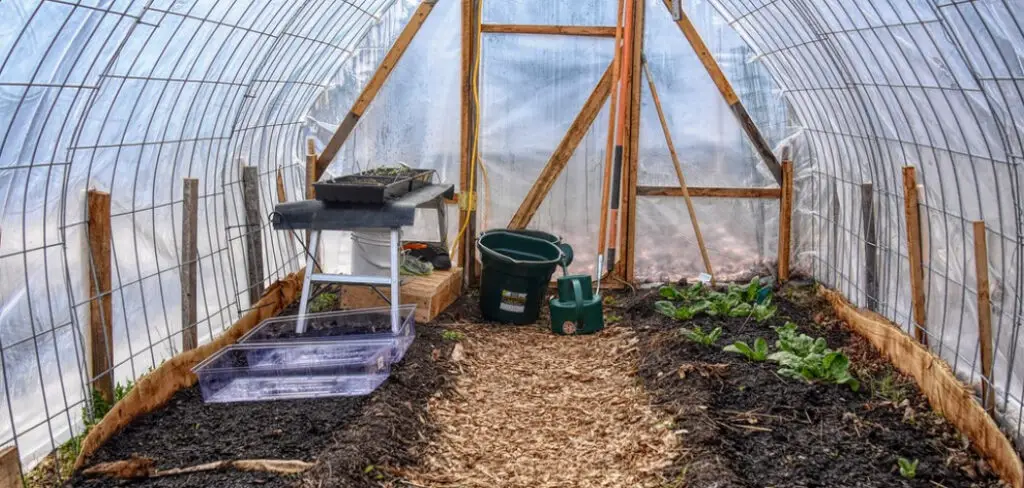
The structure is portable and easy to build, making it a popular option for backyard farmers and homesteaders.
In this guide on how to build a hoop coop, we will discuss the steps to build a hoop coop and some tips for maintenance and care.
Necessary Items
To build a hoop coop, you will need the following items:
- PVC pipes or metal conduit for the hoops (the number and length of the pipes/conduit will depend on the size of your desired coop)
- Connectors for joining the pipes/conduit (such as elbow joints and T-joints)
- Chicken wire or hardware cloth for covering the hoops
- Zip ties or wire for securing the chicken wire/hardware cloth to the hoops
- A tarp or other material for a temporary roof (optional)
- Tools including a saw, drill, and pliers
12 Steps on How to Build a Hoop Coop
Step 1: Planning and Preparation
Before you begin building, it is important to have a clear plan in place. Consider the size and location of your coop, as well as the number and type of animals you will house inside. Make sure you have all the necessary materials and tools on hand before starting.
Step 2: Measure and Cut Pipes/Conduit
Measure and cut your PVC pipes or metal conduit to the desired length for your hoop coop. Remember to account for the height of the structure and any additional width needed for a door. As a general rule, each hoop should be at least 4 feet wide to allow room for animals to move around comfortably.
Step 3: Create the Base
Lay out your pipes/conduit on the ground in a rectangular shape to create the base of your coop. Use connectors to join the pieces together at each corner, making sure they are secure. Soak the ends of the pipes/conduit in hot water for a few minutes before inserting them into connectors – this will make it easier to fit them together.
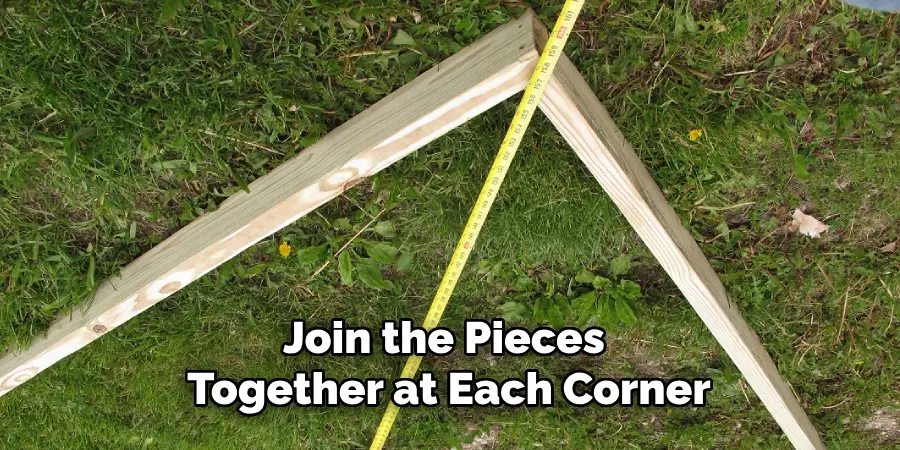
Step 4: Add Hoops
Starting at one end of the base, insert your first hoop (a PVC pipe or metal conduit) into a connector and bend it over to connect to the opposite side. Repeat this step for each hoop, evenly spacing them along the length of the structure.
Step 5: Secure Hoops
Once all hoops are in place, use connectors or duct tape to secure them at each end. This will prevent the hoops from shifting during construction. Keep in mind that the height of your hoops should gradually increase towards the center to create a rounded shape.
Step 6: Cover with Chicken Wire/Hardware Cloth
Measure and cut a piece of chicken wire or hardware cloth to fit over the top of your hoop structure. Secure it to each hoop using zip ties or wire, making sure there are no gaps for animals to escape.
Step 7: Add a Door
Create an opening for a door at one end of the structure by bending two hoops upward and securing them in place with connectors. Cover this area with chicken wire or hardware cloth, leaving room for a small door to open and close. You can also use hinges and latches to create a more secure door.
Step 8: Make the Roof (Optional)
If you want to provide additional protection and shelter for your animals, you can add a temporary roof using a tarp or other material. Simply drape it over the top of the structure and secure it with zip ties or wire.
Step 9: Add Perches/Nesting Boxes
Inside the coop, add perches for chickens or other birds to roost on and nest boxes for them to lay eggs in. These can be made from scrap wood or purchased at a hardware store. If you plan to house ducks, be sure to provide a shallow pool of water for them to swim and clean themselves in.
Step 10: Dig In
If desired, you can dig down into the ground and secure the bottom of your hoop coop with bricks, rocks, or other heavy objects. This will prevent predators from digging under the wire and entering the coop. Also, make sure to remove any sharp objects or potential hazards from the ground before securing your coop.
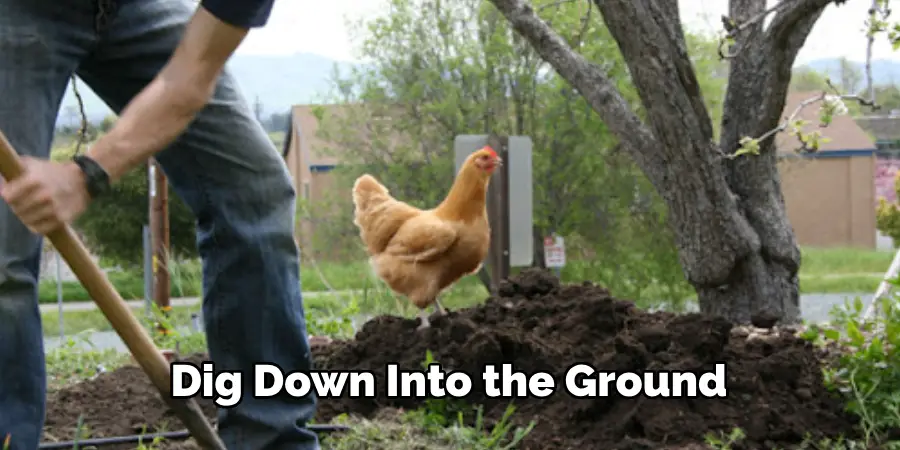
Step 11: Add Bedding and Food/Water Containers
Line the floor of your coop with bedding material such as straw, hay, or wood shavings. Place food and water containers inside for animals to easily access. Make sure to clean and refill these regularly to maintain a healthy and hygienic environment for your animals.
Step 12: Enjoy Your New Hoop Coop
Congratulations, you have successfully built a hoop coop! Now it’s time to introduce your animals to their new home and watch them enjoy the benefits of a safe and secure shelter.
This simple and affordable structure will provide protection from predators, natural elements, and other potential dangers, making it a valuable addition to any backyard farm or homestead. So go ahead and start planning your next DIY project – maybe a chicken coop or a garden bed? The possibilities are endless with the skills you’ve gained from building a hoop coop!
9 Safety Measures to Keep in Mind
1) Always Wear Protective Gear
When using tools and handling materials, it is important to wear safety goggles, gloves, and any other necessary protective gear. Then, you can focus on building without worrying about potential injuries. If children are involved in the construction process, make sure they are supervised and also wearing protective gear.
2) Use Proper Tools
Using the right tools for the job not only makes things easier but also ensures safety. Make sure to use sharp saws and drills that are suitable for cutting PVC or metal. Just remember to handle them with care and keep them away from children.
3) Take Breaks
Building a hoop coop can be physically demanding, so it’s important to take breaks when needed. Stay hydrated, stretch your muscles, and rest as necessary. This will help prevent injuries from overexertion and ensure the quality of your work.
4) Secure the Structure
Before introducing animals to your hoop coop, make sure it is securely anchored to the ground or otherwise stabilized. This will prevent any accidents caused by a shifting structure. Some additional measures you can take include using sturdy materials and reinforcing connections with extra zip ties or wire.
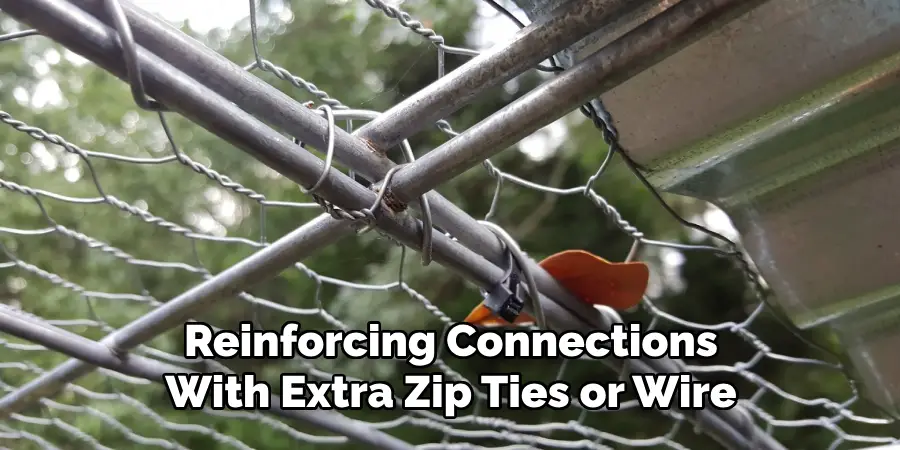
5) Keep the Area Clean
During construction, it’s important to keep the work area clean and organized. This will prevent potential injuries from tripping over tools or materials. After completing the hoop coop, regularly clean and maintain the inside to ensure a healthy environment for your animals.
6) Use Caution with Power Tools
If using power tools, make sure to read the instructions and use them carefully. Always unplug or turn off the tool when not in use, and never leave it unattended while running. Keep children away from any power tools as well.
7) Plan for Inclement Weather
When constructing a hoop coop, it’s important to plan for potential inclement weather. Make sure to build in a location that is protected from strong winds and other severe conditions. Additionally, consider adding a temporary roof or tarp to provide extra protection during harsh weather.
8) Check for Hazards
Before starting construction, check the area for any hazards, such as sharp objects or potential electrical dangers. Remove or secure these items before beginning to build.
9) Seek Help if Needed
If you are unsure about any aspect of building a hoop coop, don’t hesitate to seek help from a professional or experienced individual. This will ensure that the structure is safe and properly constructed for your animals. Remember, safety should always be the top priority when undertaking any DIY project.
Building a hoop coop is a fun and affordable way to provide shelter for your animals. By following the steps outlined in this guide and keeping safety measures on how to build a hoop coop in mind, you can successfully create a secure and comfortable home for your backyard pets.
Whether you’re raising chickens, ducks, or other small animals, a hoop coop is a practical addition to any homestead. So gather your materials, put on some protective gear, and get ready to build your very own hoop coop!
8 Things to Avoid
1) Using Unstable Materials
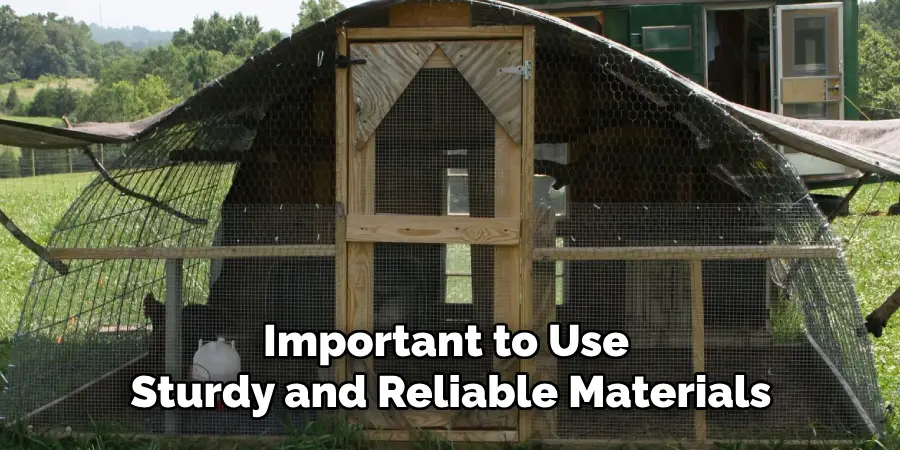
When building a hoop coop, it’s important to use sturdy and reliable materials. Avoid using flimsy or unstable materials that could potentially collapse or break, putting your animals at risk. Even if you’re on a budget, investing in quality materials will save you from potential disasters in the long run.
2) Overcrowding
It may be tempting to fit as many animals as possible into your hoop coop, especially if you have limited space. However, overcrowding can lead to stress and health issues for your animals. Make sure to provide enough space for each animal to move around comfortably and access food and water without competition.
3) Neglecting Maintenance
A hoop coop requires regular maintenance to ensure the health and safety of your animals. Neglecting tasks such as cleaning, repairing any damages, or securing the structure can lead to potential hazards for your animals. Make sure to schedule regular check-ups and address any issues promptly.
4) Using Improper Tools
Using the wrong tools can not only affect the quality of your work but also pose a safety risk. Make sure to use appropriate tools for cutting and securing materials and handle them carefully to avoid injuries. Then, your hoop coop will be sturdy and safe for your animals.
5) Blocking Ventilation
Proper ventilation is crucial for the health of your animals. Avoid blocking any openings or vents in the hoop coop that allow air to circulate. This will prevent moisture build-up and maintain a comfortable environment for your animals.
6) Ignoring Predators
While a hoop coop provides shelter for your animals, it’s important to also consider potential predators. Make sure the structure is secure and predator-proof by using materials such as wire mesh or hardware cloth. Regularly check for any weak spots or breaches in the structure.
7) Using Toxic Materials
Avoid using toxic materials when building a hoop coop, especially if you plan on raising animals for consumption. This includes using pressure-treated wood, which contains chemicals that can be harmful to animals and humans. Stick to untreated wood or other safe materials.
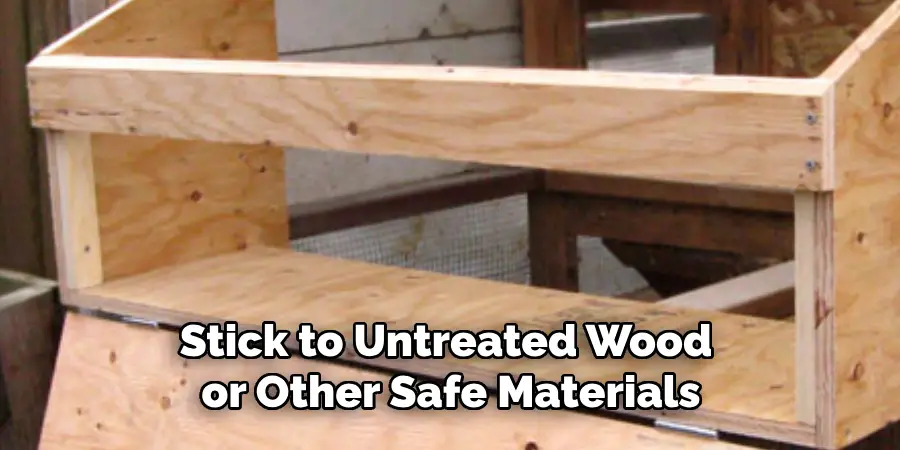
8) Skipping Permits
Depending on your location, you may need a permit before building a hoop coop. Make sure to research and obtain any necessary permits before beginning construction. This will ensure that your hoop coop meets all safety and building standards in your area.
Building a hoop coop can be a fun and rewarding project for any backyard homesteader. However, it’s important to prioritize safety by following proper construction techniques and avoiding potential hazards.
By keeping these tips in mind, you can create a secure and comfortable home for your animals while also enjoying the satisfaction of a DIY project well done. So go ahead and get started on your hoop coop, but don’t forget to prioritize safety every step of the way!
8 Additional Tips for Maintaining a Hoop Coop
1) Regularly Clean and Disinfect
To prevent the spread of disease, it’s important to regularly clean and disinfect your hoop coop. This includes removing any old bedding, scrubbing surfaces with a safe disinfectant, and replacing bedding with fresh materials.
2) Provide Adequate Bedding
Bedding not only provides warmth and comfort for your animals but also absorbs moisture and waste. Make sure to provide enough bedding for your animals and replace it regularly to maintain a clean and dry environment.
3) Keep Food and Water Clean
Regularly clean food and water dishes or containers to prevent the growth of bacteria or mold. This will ensure that your animals have access to clean and fresh food and water, promoting their health. If using a water dispenser, make sure to regularly clean and change the water to prevent algae growth.
4) Inspect for Damages
Regularly inspect your hoop coop for any damages or wear and tear. This can include loose wires, holes in the structure, or damaged bedding areas. Address these issues promptly to maintain a safe environment for your animals.
5) Check for Pests
Pests such as rodents or insects can quickly become a problem in a hoop coop. Regularly check for signs of pests, and take appropriate measures to get rid of them if necessary. However, make sure to use safe and non-toxic methods to avoid harming your animals.
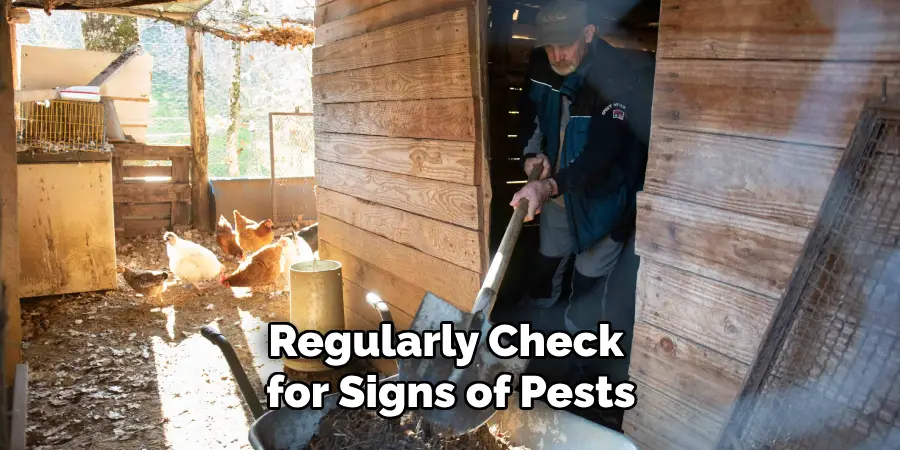
6) Monitor Temperature
In extreme temperatures, it’s important to monitor the temperature inside the hoop coop. Make sure your animals have access to shade or shelter from harsh sunlight, and provide additional warmth during cold weather. This can include using heat lamps or providing extra bedding.
7) Rotate Grazing Area
If you’re using your hoop coop to raise chickens or other animals, it’s important to rotate their grazing area. This will prevent the depletion of grass and promote healthy pasture growth for your animals to graze on.
8) Pay Attention to Behavior
Pay attention to any changes in behavior from your animals, as this can be an indication of health issues or stress. Make sure to address any concerns promptly and seek veterinary care if necessary.
By following these maintenance tips on how to build a hoop coop, you can ensure the ongoing health and safety of your animals in a hoop coop environment.
Remember to prioritize regular maintenance and always make adjustments as needed. With proper care, your hoop coop will continue to provide a safe and comfortable home for your animals.
Frequently Asked Questions
What Animals Can Be Kept in a Hoop Coop?
Hoop coops can accommodate various animals, such as chickens, ducks, rabbits, and goats. However, it’s important to research the specific needs of each animal and make appropriate adjustments to the hoop coop structure to ensure their health and safety.
Do I Need a Permit to Build a Hoop Coop?
This depends on your location. Some areas may require a permit for any type of livestock structure, while others may not have any regulations. It’s best to research and obtain any necessary permits before beginning construction.
Are Hoop Coops Safe for Animals?
As with any type of animal housing, it’s important to prioritize safety when building and maintaining a hoop coop. By following proper construction techniques and implementing regular maintenance, a hoop coop can provide a secure and comfortable environment for animals.
Can I Use a Hoop Coop for Year-Round Housing?

Hoop coops can be suitable for year-round housing if properly designed and maintained. This includes providing adequate insulation during colder months and ensuring proper ventilation for warmer weather. It’s important to monitor the temperature and make adjustments as needed to keep your animals comfortable. A hoop coop can be a versatile and practical option for animal housing with proper planning and care.
Conclusion
In conclusion, building and maintaining a hoop coop can be a fulfilling project for any backyard homesteader. By following proper construction techniques on how to build a hoop coop, prioritizing safety, and implementing regular maintenance, you can create a safe and comfortable home for your animals.
Don’t forget to also research the specific needs of your animals and make necessary adjustments to ensure their health and well-being in the hoop coop environment. With these tips in mind, you’ll be well on your way to successfully raising happy and healthy animals in your very own hoop coop. So what are you waiting for? Get started on your project today!
About
Outdoor Fixes is a distinguished figure in the world of Diy design, with a decade of expertise creating innovative and sustainable Diy solutions.
His professional focus lies in merging traditional craftsmanship with modern manufacturing techniques,
fostering designs that are both practical and environmentally conscious. As the author of diy,
outdoorfixes delves into the art and science of outdoorfixes-making, inspiring artisans and industry professionals alike.
Education RMIT University
(Melbourne, Australia) Associate Degree in Design (Outdoor Fixes) Focus on sustainable design, industry-driven projects,
and practical craftsmanship. Gained hands-on experience with traditional and digital manufacturing tools, such as CAD and CNC software.
Nottingham Trent University
(United Kingdom) Bachelor’s in outdoorfixes.com and Product Design (Honors) Specialized in product design with a focus on blending creativity with production
techniques. Participated in industry projects, working with companies like John Lewis and Vitsoe to gain real-world insights.
Publications and Impact
In diy, Outdoor Fixes his insights on indoor design processes, materials, and strategies for efficient production.
His writing bridges the gap between artisan knowledge and modern industry needs, making it a must-read for both budding designers and seasoned professionals.

